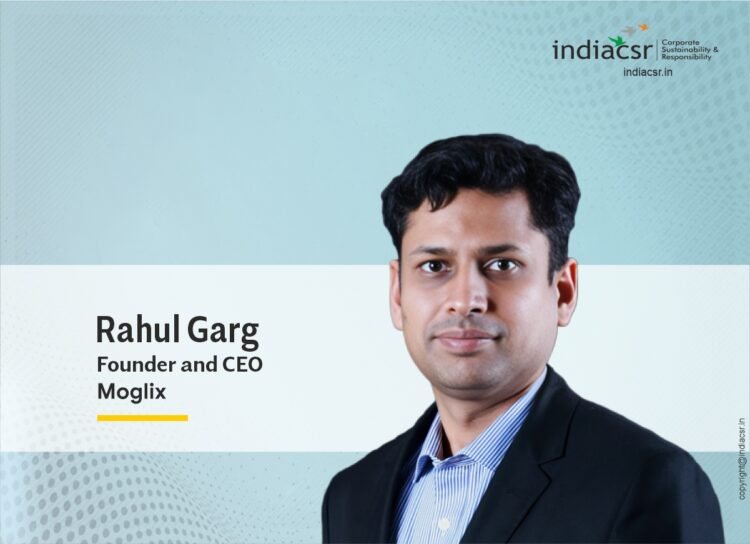By Rahul Garg
E-procurement is a nearly $1 trillion annual e-commerce market, with an increasing share of that market being taken by sustainable procurement. This means that integrating sustainability into the very core of a B2B e-commerce startup these days isn’t just a feel-good initiative, it’s a strategic decision with tangible benefits. It strengthens brand reputation, fosters customer loyalty, and attracts investors increasingly focused on ESG. To get there however, B2B e-commerce startups need to begin by building a robust framework for sustainability within their organization.
Ideation Phase: Setting the Foundation for Sustainability
A strong foundation is crucial for any successful venture. When it comes to sustainability, that foundation starts with clearly defined goals and objectives. Consider the environmental and social impact targets for the startup. For example, the aim could be to reduce carbon footprint by a specific percentage, or to support ethical labor practices within the supply chain.
Next, delve into market research. Identify existing sustainability trends within the target B2B customer base. Understand their concerns and expectations. Identify the solutions they are actively seeking. This research will help build a value proposition, ensuring the B2B e-commerce platform caters not just to traditional needs but also offers a sustainable advantage.
Every aspect of the value chain should be seen through a sustainability lens. How can materials and products be sourced responsibly? Can eco-friendly packaging solutions be implemented? Every decision should be aligned with the overall sustainability goals.
Throughout these processes, it’s critical to not operate in a silo. Engage key stakeholders – employees, investors, and potential partners – in the conversation around sustainability. Foster a culture of environmental and social responsibility within the startup. Empower the team to champion sustainable practices and be vocal advocates for positive change.
Planning Phase: Developing a Sustainable Strategy
With a clear vision in place, it’s time to translate that vision into a practical strategy. Conduct a life cycle assessment to understand the environmental impact of business activities, from sourcing to delivery. This will help identify priority areas for intervention.
Developing and regularly monitoring KPIs is essential. Define metrics that track progress towards sustainability goals. These might include metrics for reduced waste generation, renewable energy usage, or diversity within the workforce. By consistently measuring performance, it’s easy to identify successes, pinpoint areas for improvement, and demonstrate commitment towards sustainability to stakeholders.
To translate sustainability goals into concrete action plans, start by formulating strategies for sustainable sourcing, partnering with suppliers who share similar commitment, and exploring options for eco-friendly production methods. At the same time, ways to optimize distribution routes for efficiency and reduced carbon emissions can also be explored.
Finally, create a roadmap for implementing these sustainability initiatives. Set realistic timelines and assign ownership for each project. This roadmap will keep the team focused and ensure steady progress towards sustainability goals.
Implementation Phase: Putting Sustainability into Action
Start by reviewing existing practices. Can digital processes be immediately implemented to reduce paper waste? Can customers be instantly provided the option to choose eco-friendly packaging? Every small change contributes to a larger impact.
Collaboration is key. Don’t underestimate the power of partnering with suppliers and vendors. Work together to establish ethical sourcing practices and explore options for joint sustainability initiatives.
Investments in green technologies can significantly improve overall sustainability performance. Consider exploring renewable energy options for operations or implementing energy-efficient infrastructure. While initial costs might be involved, the long-term benefits outweigh the investment. Tesla, renowned for its electric vehicles (EVs) and renewable energy solutions, is at the forefront of investing in green technologies. The company has consistently allocated significant resources to research, development, and implementation of sustainable energy solutions.
Sustainability is an ongoing journey, not a destination. Regularly monitor KPIs, analyze the results, and be prepared to make adjustments as needed. Continuously strive to refine processes, identify new opportunities for improvement, and ensure that sustainability efforts remain impactful.
Communication Phase: Sharing Sustainability Stories
Transparency is paramount when it comes to sustainability. Develop a clear communication strategy for sharing sustainability efforts with stakeholders. This includes existing and potential customers, investors, and business partners.
It’s also important to educate the B2B audience about the importance of sustainability in B2B e-commerce. Highlight how the platform offers a solution that aligns with their own environmental and social responsibility goals.
Don’t just tell, show. Showcase success stories by quantifying the impact of sustainability initiatives. The goal is to inspire others within the B2B e-commerce industry. A collaborative approach can foster a ripple effect, driving positive change across the entire B2B landscape.
At the same time, actively solicit feedback from stakeholders. Encourage open dialogue about sustainable initiatives. This feedback can be invaluable in identifying areas for improvement and ensuring that sustainability efforts continue to resonate with customers.
Conclusion
Building a sustainable framework for a B2B e-commerce startup requires dedication and a long-term vision. A robust framework that inculcates all the above-mentioned steps can help create a B2B e-commerce platform that delivers value to customers, minimizes its environmental impact, and fosters a culture of positive change within the industry.
By doing this, startups not only contribute to a healthier planet and a more responsible business landscape, but also position themselves for long-term success in an increasingly environmentally conscious marketplace.
Startups that embrace the sustainable philosophy and actively work towards environmental and social responsibility will be the ones shaping the future for the industry.
About the author:
Rahul Garg, Founder and CEO, Moglix






